How to store clothes in the long term – 7 ways professional organizers keep out-of-season items looking as good as new
Avoid damage with these expert secrets


We don't need all our clothes, all year, so learning how to store clothes in the long term and stop them getting damaged whilst in storage will improve your closet's functionality. It will also keep your favorite out-of-season items in one piece.
Whether you’re putting away any lingering winter staples for your much-needed summer essentials, or have some key items you rarely use but would like to keep, these clothes storage ideas are just the ticket.
7 ways professional organizers store clothes in the long term
1. Clean and assess damage
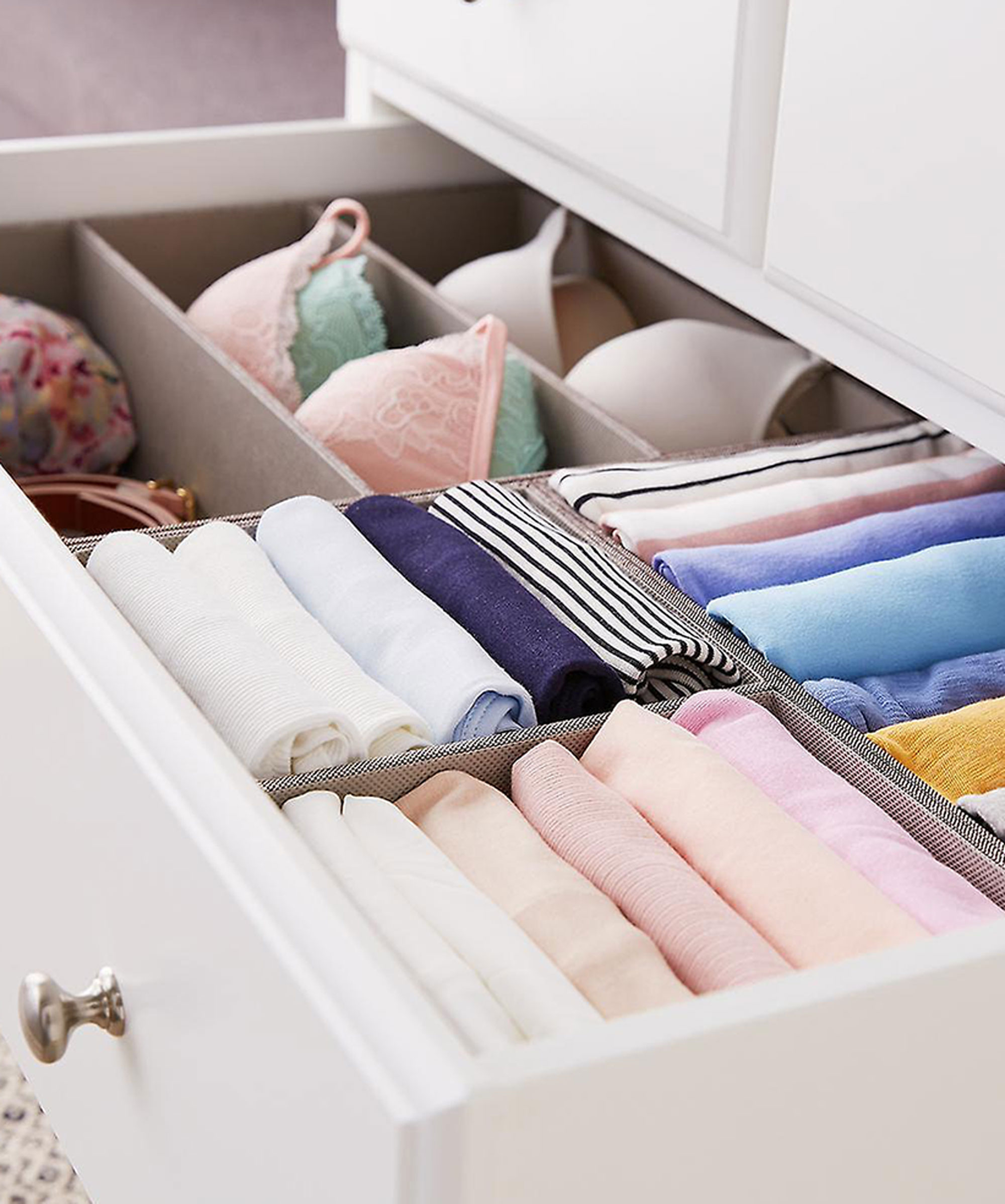
You can't decide how to store clothes in the long term if you don't first figure out what you're keeping, storing, selling or donating
Before you start storing your garments, professional organizer and author of The Folding Book, Janelle Cohen tells us you should really give your clothes a thorough assessment first.
'Start by evaluating the item's condition. Clothing that is in good condition and has not been worn frequently is more likely to be suitable for long-term storage,' she explains. 'On the other hand, clothing that is damaged, stained, or shows signs of wear may not be worth keeping.'
Marcia Sloman of Under Control Organizing agrees, noting that some damaged items might actually be salvageable – but, regardless, everything you hang onto should be cleaned before storing.
'The first task before storing clothing long-term is to be sure the items are clean and without any need of repair,' says Sloman. 'If repairs are needed, first be sure the items are clean, and remove them from your closet. If you are a DIYer, store these items near your sewing box or craft area. Otherwise, get them ready for the seamstress, weaver, or shoe repair.'
If you struggle with decluttering your clothes quickly, ask yourself if you've worn that item in the last year or not. If not, it's safe to let it go as you're unlikely to suddenly want to use it in the future when it's been gathering dust for the last 12 months.
Design expertise in your inbox – from inspiring decorating ideas and beautiful celebrity homes to practical gardening advice and shopping round-ups.
You can also use the 'didn't know' decluttering method as a simple parameter to ease the guilt of getting rid of clothes, instead of storing clothes in the long term for a hypothetical day of use that will likely not come.
2. Decide if you'll keep each item

Methodical decision making will ease the mental fatigue.
You'll be pleased to know that decluttering is not everything. Once you determine the quality of each piece, Cohen says you should consider two other elements: functionality and sentimentality.
'Examine the clothing that you may be storing long term,' suggests Sloman. 'Decide if the items will be worn again next year or to a future formal event. Check your budget for off-site storage vs. an in-home storage area.'
Cohen fully agrees – just because a piece of clothing isn’t beaten to shreds, you might not need to hang onto it. 'Consider whether the item fits your current lifestyle and if it is likely to be worn again in the future,' she says. 'If the item no longer suits your style or does not fit properly, it may be better to donate or consign it rather than store it long term.'
Identifying and removing the items that belong to your 'fantasy self' is a simple but effective decluttering method.
On the other hand, some items should stay – even if they’re not in the best shape. 'If an item holds significant sentimental value, it may be worth keeping even if it is not frequently worn,' Cohen says. 'For example, a wedding dress or a family heirloom may be worth storing long term.'
3. Storing clothes in the long term
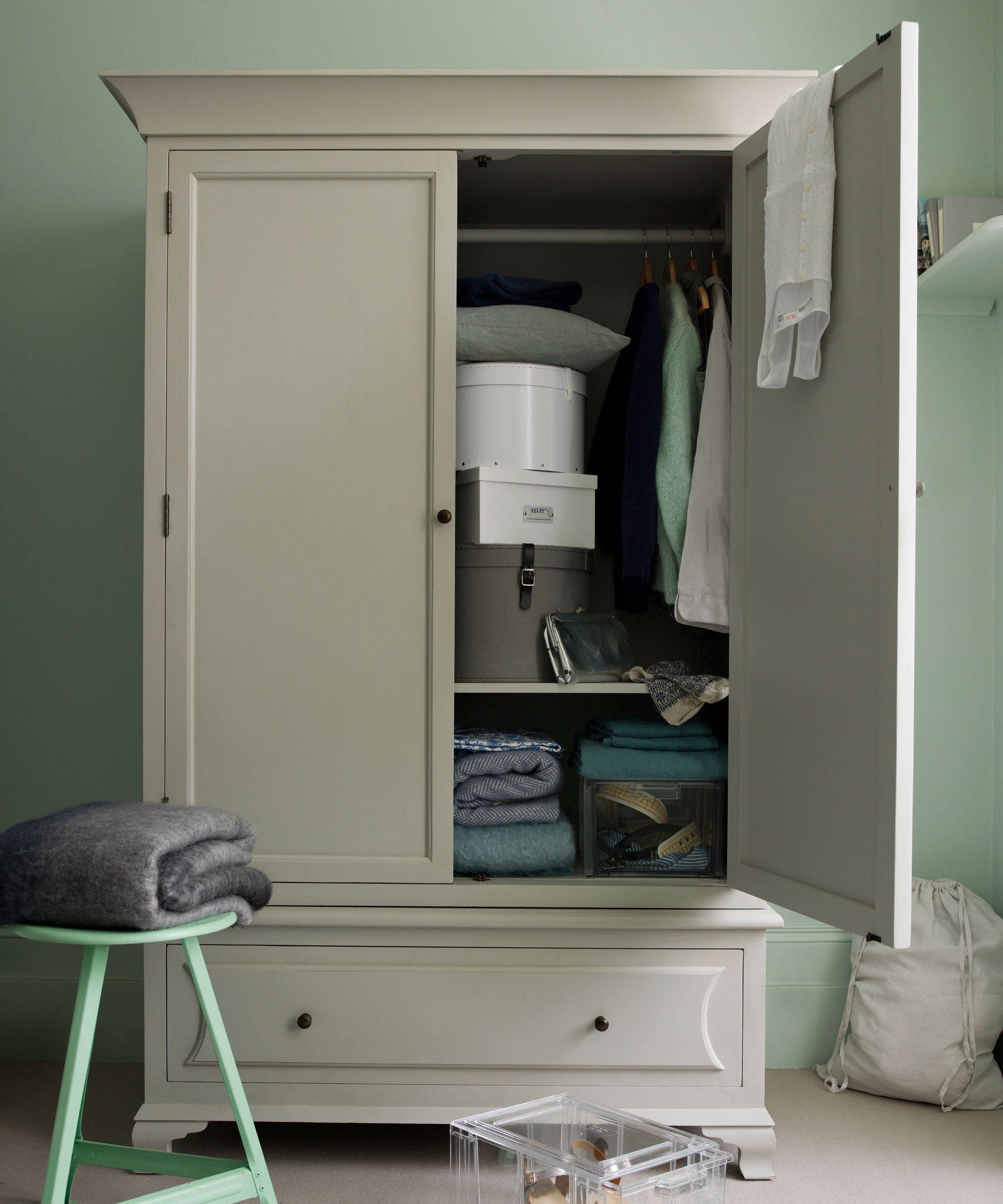
You can utilize dead space above, below, or inside storage areas
Deciding which clothes you’re storing in the long term is just as important as figuring out how and where you're storing them, advises Sloman. If you’re doing a full seasonal swap, you should be very structured in how you go about the entire process.
'If you will be shifting your items from your active closet to an in-home storage closet, find a temporary location to place your items,' she says. 'Your transition will take place in three shifts between the active closet and the storage closet.
'First, remove clothing from your active closet and set it aside,' she says. This is a great opportunity to clean your closet. 'Then, move clothing from storage to your active closet, and finally, move your clothing from the temporary location to your in-home storage closet.'
Another thing to consider is the quality of the clothes you take out of long-term storage, especially before you add anything to the closet or storage unit.
'Be sure to air out stored clothing and check for damage,' says Sloman. 'If you find moth damage, do not place [the items] in your active closet.'
Similarly, don’t place anything into storage until you get rid of moths. We have a great recipe for homemade moth repellent, if you want to keep to natural ingredients.
Alternatively, Dr Killigan's Potent Moth Traps are a bestseller from Amazon that uses a combination of moth-attracting pheromones and sticky traps to help you get rid of moth infestations quickly.
Always wash and fully dry your clothes before putting clothes into long-term storage. Using vacuum storage bags, also from Amazon, is a brilliant way to store clothes when not in use, without taking up an enormous amount of space.
Punteha van Terheyden, head of Solved, says, 'I swear by these for utilizing limited clothes storage space for items I don't wear all the time, or for many months of the year. If you clean and dry them fully before placing them inside, when you open them up again in months or years from now, your clothes will smell as fresh as they did when they went in for long-term storage.'
4. Consider the pros and cons of offsite storage
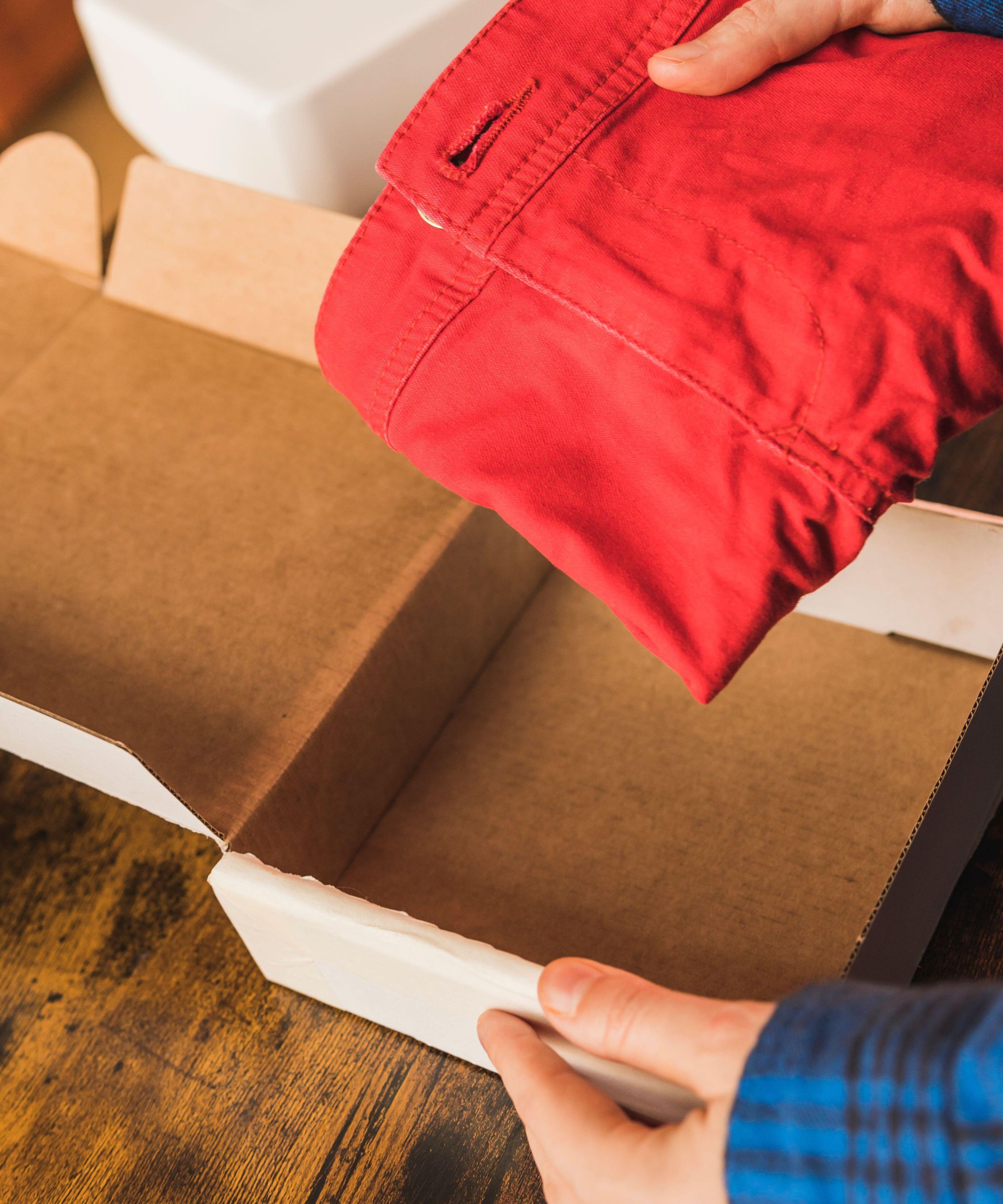
There are pros and cons to storing clothes in long term storage away from your home
Depending on how long you plan to store your garments, Sloman says offsite storage might be the way to go. Why use up valuable closet space for items you don’t plan on wearing again anytime soon?
'If you need long-term off-site clothing storage for luxury items, there are companies that offer a full suite of services to preserve your fashions,' Sloman explains. 'For those with limited budgets, many dry cleaners will clean and store your clothing.'
One thing worth considering, however, is exactly what you’re storing. If grandma left you her fur collection, for example, that will require a different storage facility than your standard down puffers. 'If you own fur outerwear, it’s best to have it stored between seasons in temperature-controlled environments, or the skins can dry out over the long term,' says Sloman.
If it's time to pass on your heirlooms, delve into how to declutter sentimental items with ease.
5. Prepare your clothes for long term storage
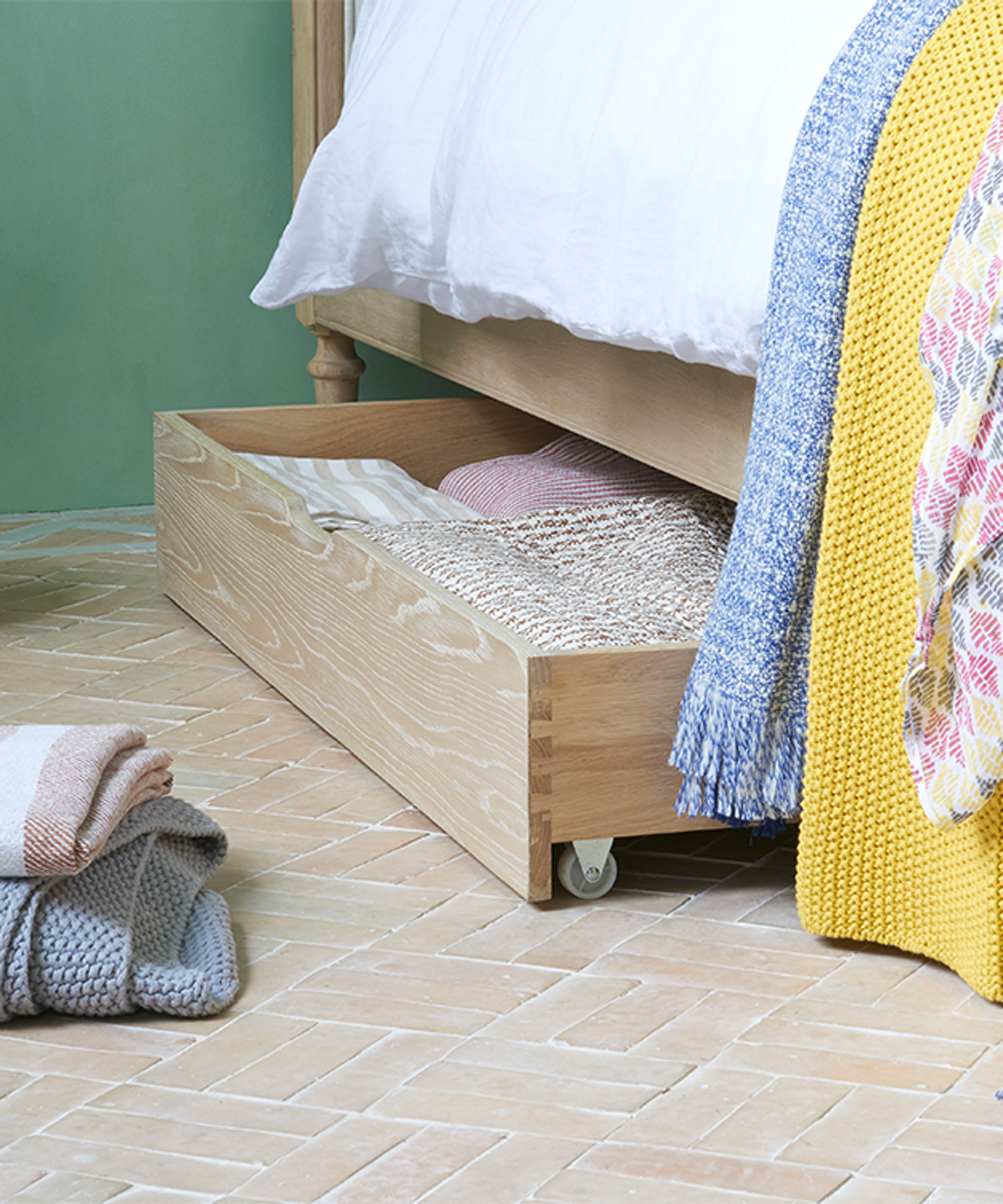
Preparing your clothes for storing away for long periods will ensure they do not become quietly damaged when they're out of sight for months, or years
It’s easy to think that you just need to shove your clothes out of the way in a closet that’s normally unused, but Sloman warns this is a common storage mistake.
'If you have the space in your home to store clothes long term, a separate closet that is temperature and humidity controlled away from daily activity is best,' she says. 'Hang durable fabrics such as jackets, shirts, and pants. Fold delicate fabrics that will get misshapen, like knits and sweaters, over on a hanger.'
You might find space in an often-empty guest room, for example.
Along with picking the right closet, you probably will want some long-term closet organization ideas and storage accessories.
'[Consider] portable covered clothing racks, separate, cedar-lined closets, under bed storage ideas, non-porous boxes, garment bags, and vacuum sealed bags,' says Sloman. 'If boxing [up clothes], separate colorful fabrics with acid-free tissue, and box footwear separately. Lastly, use cedar blocks or moth-away sachets (not moth balls or flakes) to deter critters.'
These cedar blocks from Amazon are highly rated, and we like these rose-scented moth away sachets. For vacuum-packing clothes, this pack of 20 vacuum storage bags is Amazon's top buy. More of our favorite buys are below.
Opt for folding rather than hanging your clothes, as hangers (especially wire hangars) can damage clothes over time. You can use a folding board to help, and opt for velvet hangers, both available at Walmart, to make it easier.

Steel pipes give this portable wardrobe easy and durable home construction. It's a sensible long-term clothes storage option to clear space in your main closet. The combination of shelves, pockets, and hanging space makes it versatile, whilst the cover protects your stored clothes from dust and pests.
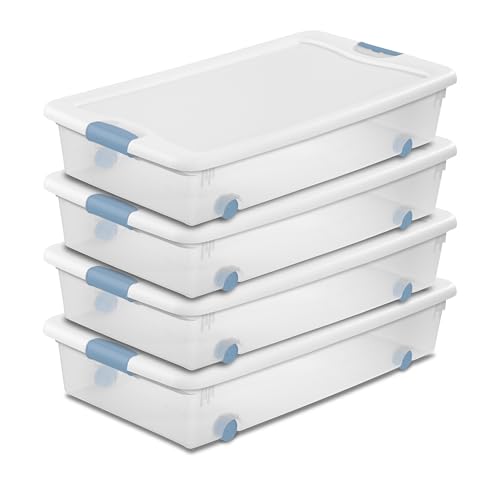
Clear material and sturdy wheels make this underbed long-term clothes storage option easy to access and navigate. No more opening every box or cabinet to find the one item you need today. Use them under beds and sofas, or stack them in a basement or attic.
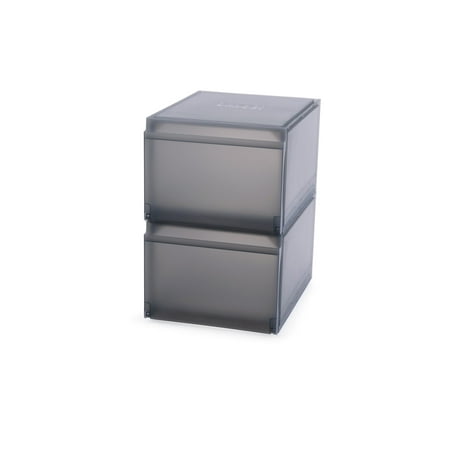
Head of Solved Punteha van Terheyden recommends these shoe storage boxes for long term preservation of your favorites. They have ventilation grates as well as slide out trays. 'They're really sturdy, stackable, durable and click to construct', she says.
6. Use garment bags

If you have a dedicated closet or storage room with hanging space, Cohen says you should always hang garments with a protective barrier.
'Garment bags are a good solution for formal wear that you want to make sure stays protected in long periods of storage,' Cohen explains. 'Add cedar products like cedar blocks or hangers to deter moths.'
You can pick up a pack of moth-deterring cedar rings in Walmart.
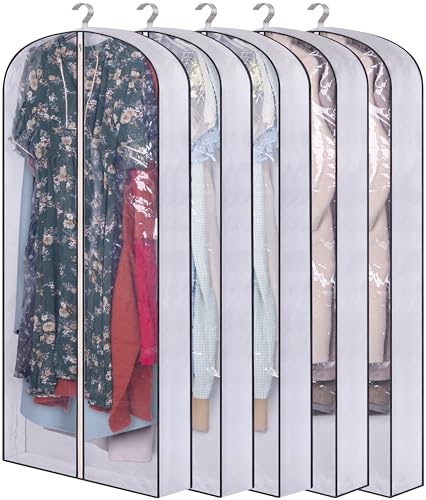
Assuming your clothes don’t require heavy-duty and climate-controlled storage, clear garment bags are the best bet for storing clothes long term. This way, you can easily thumb through your storage racks until you find what you need, when you need it.
7. Use vacuum-sealed bags
Attics and basements are great for stowing away items until a later date, but not everyone can be so lucky. If you’re short on storage space, Cohen says vacuum-sealed bags, which are available at Walmart, Target, and Amazon, are the way to go.
'Vacuum-sealed storage bags allow you to compress clothing items and save space,' she explains. 'You can store them in bins in the garage, under the bed, or on top of the closet. They double your space and are airtight, which helps to prevent moisture and damage to your clothes in the long term.'
FAQs
Can clothing withstand long-term storage?
Okay, so you’ve determined that you want to hang onto an item, it’s in great condition, and that you will wear it again in the future. Cohen warns that long-term storage still might not be the answer.
'Consider the fabric type,' Cohen warns. 'Some fabrics, such as wool and silk, can be prone to moth damage if left in storage for a long time. Synthetic fabrics, on the other hand, can be more durable and may be suitable for long-term storage.'
What is the best way to store clothes long term
It is really important to store clothes that have been cleaned first, and which are fully dry. Then, ensure that the storage you have chosen for them protects them from temperature fluctuations, moisture, sunlight, invasive pests and from squashing (except when choosing vacuum packing).
Ensure storage space is ventilated, too, and that your clothes are stored in a way that avoids creasing for long periods – rolling is better than folding, for example. We look at various ways to fold shirts to avoid creasing in our dedicated feature.
Should I store clothes in plastic or cardboard?
It is better to store clothes in plastic because tough (non PVC) storage boxes can protect clothes in the long term from moisture and pests where cardboard storage items can't. The boxes should have tightly fitting lids, ideally lockable, and should be opened up every now and then to be checked and aired.
Meet the experts

Janelle Cohen is the professional home organizer behind Straighten Up By Janelle, author of The Folding Book, and TV personality, known for her appearances on top shows like The Today Show and Good Morning America. With a passion for creating organized and functional living spaces, Janelle uses her expertise to help clients declutter, streamline, and optimize their homes for maximum efficiency and style.

Marcia Sloman has been a professional organizer for more than thirty years. By helping individuals during and after times of life’s transitions, Marcia is particularly well suited to work with those facing personal or professional shifts, as well as anyone coping with the avalanche of tasks and stuff. Her specialty focuses on help for individuals challenged by ADHD, anxiety, medical issues, or life changes such as job changes, birth, death, moving, or divorce.
Clearly, light, moisture and pests are a problem when storing clothes long term, so ideally choose a space that's windowless. This might mean a garage or basement or attic if you're storing at home. In any space that's likely to flood, ensure the storage is sealed and off the ground, and check it regularly to ensure no moisture or pests have invaded.

Ashley Chalmers is a freelance writer for Homes & Gardens with over 10 years' experience as a digital writer and content creator. Ashley started her career in entertainment and fashion PR in New York, before moving to the French countryside and taking up travel blogging. Now, Ashley lives in London. Her passion for travelling is only matched by her love of making her house feel like a home, and she loves to include her finds from around the world in her decor.